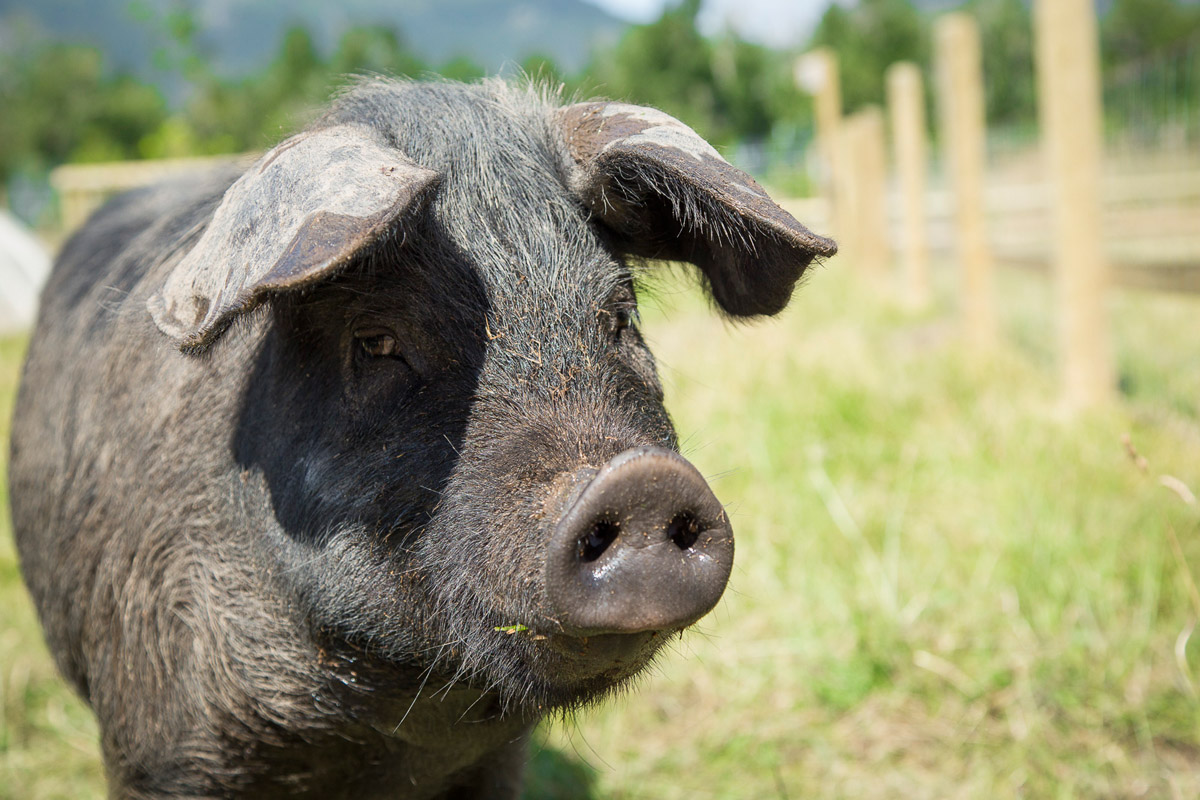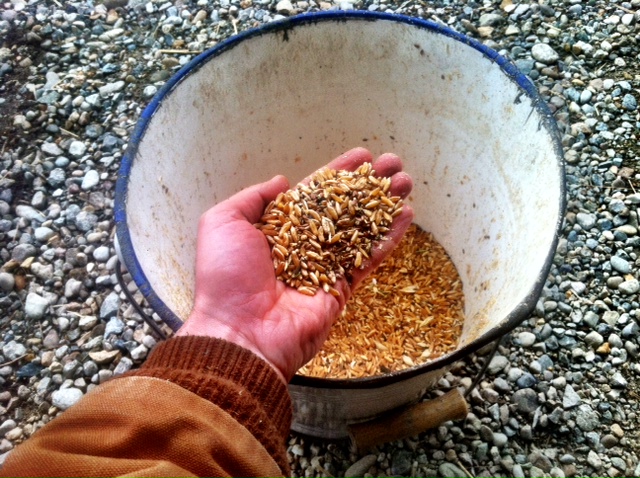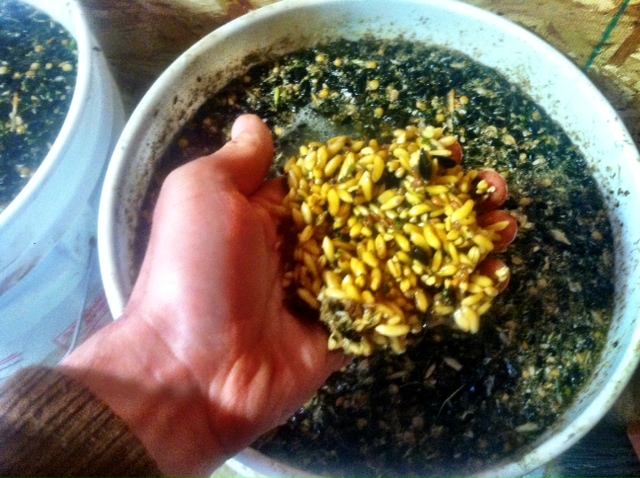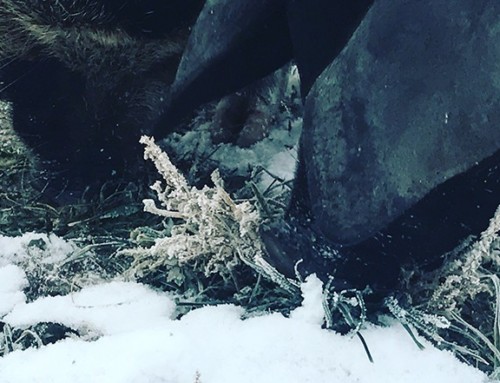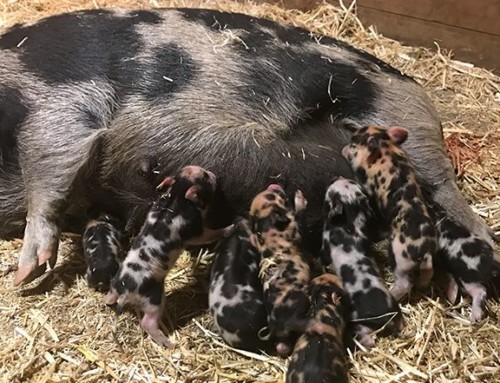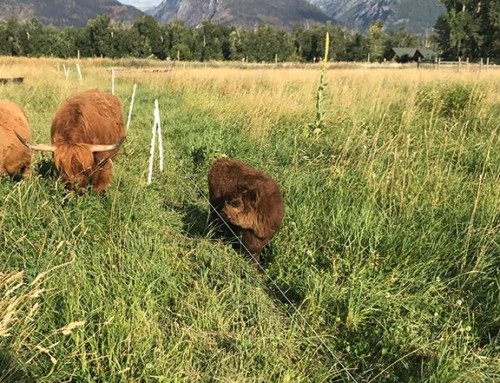Our pigs live the good life at ABC acres. Regular rotations to fresh pasture offers a good portion of their diet, and we eagerly look forward to when our fruit, nut, and legume trees and shrubs begin to produce bountiful forage for them and our other livestock on the ranch. For the time being, however, the fact remains that we feed a significant portion of grain to our porkers to supplement their diet. While it tries our patience, we know that development into perennial abundance takes time.
In the meantime, we have made it our goal to learn and use creatively efficient ways to make our feed budget go farther. This is a must for the small organic producer, as organic grain prices cause pork to be rather pricey per pound. We have found that it doesn’t matter if you can produce high quality and beyond organically raised food if its production price makes it cost-prohibitive for the consumer. We greatly reduced feed costs by switching from an organic hog grower grain blend to organic grain screenings, which is a whole grain and mixed by-product from our supplier. Taking inspiration from our hogs, we didn’t want to simply rest on our haunches at that point, but rather kept rooting around for even more feed cost reduction methods.
In doing so, we developed a fondness and appreciation for fermenting the dry grain screenings by soaking it for a couple days. We began by simply soaking the grain in water for about 12 hours before each respective AM and PM feeding. We were glad to see that this resulted in less leftover grains visible in the pig manure, and so we decided to take it a step further and ferment the grain feed. This makes the grain even more digestible and palatable to our piggies, and while they don’t seem to get a buzz from the slightly fermented grain, they do seem happy to chow down on it! We also add an effective micro-organism probiotic to the soaking grain to further increase the feed efficiency and digestive health of our pigs, along with a powdered kelp for micronutrients from this nutritionally potent plant from the sea.
This process adds very little time to our feeding routine for our heritage hogs, but greatly increases the conversion rate of grain to weight gain. It also benefits the pigs with easier and healthier digestion of the grain. The way the piggies oink happily while feasting on the fermented feed also demonstrates they prefer the taste as well, and it makes us thankful to know that through our learning and experimenting we can provide not only a good life for our hogs, but also a great product at a better price for our customers.
Blessings,
Grant

